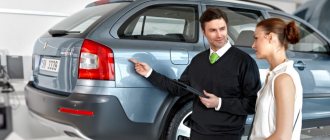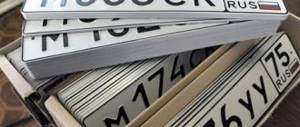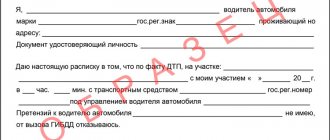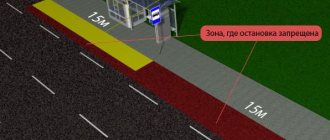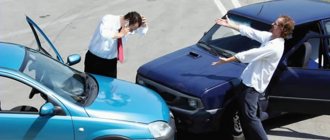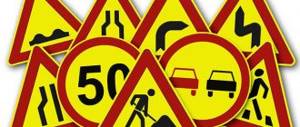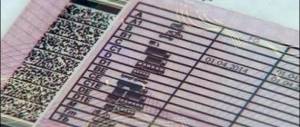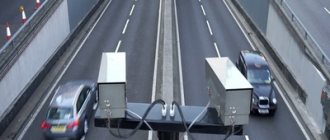There are several ways to purchase a used car, and going to a car dealership is one of them. This option is good if you have no experience in choosing and purchasing a car yourself. In addition, by purchasing a used car from a dealership, the buyer increases the likelihood that the transaction will go smoothly. But this does not mean that you should neglect checking the car yourself. After all, salon is different from salon.
Read about the pitfalls when buying a car at a car dealership in our separate article. In this article we will tell you what nuances should be taken into account when checking a car from the showroom.
What to check when buying a car at a dealership
As with any inspection of a used car, pay attention to:
- Appearance. Inspect the body for chips, rust and dents. The body should not “drive”. Uneven glare on the surface often indicates a vehicle's accident history.
- The performance of moving parts - doors, trunk, hood, handles. Locks and mechanisms must be in good working order.
- Matching serial numbers. Compare the numbers stamped on the body with those indicated in the PTS - there should be no differences.
- Salon. Visible defects are hidden under the upholstery, and possible sources of unpleasant odors are hidden with pleasant air fresheners.
- Odometer reading. The average annual mileage of a car is 5-10 thousand kilometers. Compare the year of manufacture and mileage - an obvious discrepancy should alert you. Avoid a car whose annual mileage exceeds several tens of thousands of kilometers - such people often worked in taxis in the past, which means the technical condition leaves much to be desired.
- Trunk. The check is an assessment of the gaps between body parts - they should be the same, and the interior space should be free of rust.
If you take enough time to check your car at the dealership, you will save energy on further vehicle repairs.
10) Be wary of an offer from an official dealer
Please note that if any car dealership offers you a car at a discounted price, you should be wary of this. You also need to check whether the dealer really offers you a profitable option for purchasing a car. It is quite possible that the same car can be purchased more profitably at another car dealership.
In order to analyze the offers of different dealers, you can use the Auto.ru website by going to the new cars section. As a rule, many dealers publish their offers there. However, it is worth noting that often such offers on the Internet often do not correspond to reality. Therefore, check the price of the car you saw online by phone. It’s even better to come to the car dealership and see for yourself whether the price of the car matches the price advertised on the website.
Test drive a used car before purchasing
If after the inspection you still have a question about how to check a car at a car dealership, ask for a test drive - some provide such a service. Once behind the wheel of a car, you can instantly determine its advantages and disadvantages in operation. There should be no extraneous sounds heard in the engine, much less knocks and whistles. Pedals are subject to mandatory inspection - sticking is unacceptable, but they should also give in easily.
It’s easier to check a “horse” with mileage on the go - choose various sections of the road so that you can accelerate, make sharp braking, and drive over uneven roads. As a rule, such conditions make it possible to identify previously undetected defects.
For help in inspecting the machine, you can contact a specialist. However, not every car dealership will allow you to take your car to a service station for diagnostics. Therefore, you can invite a visiting specialist with you to the transaction. You can order on-site diagnostic services on the Autocode website. An auto expert will arrive on site at any time and give an adequate assessment of the car after a thorough inspection.
If you are a professional car seller, use the “Autocode Pro” unlimited car check service. “Autocode Pro” allows you to quickly check a large number of cars, add comments to reports, create your own lists of liquid vehicles, quickly compare options and store data about cars in an orderly form.
How to avoid mistakes - what to look for and what to check in the car?
It is very important to pay attention to the following points when purchasing:
- You need to compare offers from various salons and inquire about their reputation.
- It is advisable to take with you someone you know who knows about cars. Their advice and help can be very valuable.
Further, when a specific car has already been selected, in order to avoid mistakes, the following steps must be taken.
Visual inspection
Inspect the car from all sides from different angles:
- You need to make sure there are no small dents, scratches or abrasions.
- All parts of the body must be clearly adjusted to each other at the joints, nothing should stick out.
- The distance between the doors, trunk, hood and body should be the same.
- There should be no distortions at the hood and trunk lids; to do this, you need to sit right in front of the car (front and back) and check the evenness of the lines.
- Carefully inspect the lower part of the bumper and all plastic parts of the car (front and rear). There should be no cracks or chips.
- Pay attention to the tires and wheels - they must be new.
- There should be no signs of fluid leakage under the car.
Attention! The mere fact of selling a car at a showroom does not guarantee its perfect condition!
Body and hidden elements
Necessary manipulations:
- Open the hood, trunk and doors, carefully inspect the hinges and fastening bolts (everything should be in factory paint). Pay attention to how smoothly the doors open and close.
- Look at how the plastic parts are attached to the metal; if self-tapping screws were used, there should be no signs of dismantling.
- Inspect the metal under the luggage mat (in the place where the spare tire is attached), there should be no scratches there.
- Make sure there is no damage by inspecting the area under the hood.
- Check the identity of the glass markings and their integrity.
- Make sure there are no scratches or abrasions on the plastic parts in the interior.
- Pay attention to the absence of dirt and damage to the ceiling and upholstery. All seats must be covered with cellophane covers.
- Check the adjustment of the driver and passenger seats in height, backrest angle, and the ability to move the head restraints.
- Try opening and closing the glove compartment, armrest covers, and seat belt buckles.
- Test the operation of the window regulators.
- Check the engine number and VIN number with the PTS - look under the hood (you can find out what you can find out by the VIN code of a car and how to use it to check the legal purity of a car before purchasing it).
Car technical inspection
What is included in checking a car at a car dealership:
- Carefully inspect the engine (preferably with a flashlight), make sure there is no oil fogging, leaks, or damage. Then remove the casing (top engine cover); there should be no foreign liquids or objects under it. Read more about what needs to be checked in the engine before buying a car and how to do it here.
- Check the levels of all technical fluids ; if anywhere the level is below the required level, the car dealership employees are obliged to top it up to the norm.
- Sit behind the wheel, adjust the seat and steering wheel to suit you, depress the brake and clutch pedals. The pedals should not dangle or creak and return without delay. Check the gears, they should turn on without any effort.
- Turn on the ignition, rock the steering wheel in different directions (until the wheels turn) - there should be no extraneous sounds. Check the instrument panel to see if all warning lights are working and there should be no warning signs of a problem (such as a low battery).
- Turn on the engine, listen to the sounds - the car should start quickly and smoothly (without crackling or grinding), the engine should sound smooth, without jumps. Turn the steering wheel all the way, first in one direction, then in the other - it should turn smoothly.
- Turn on each speed in turn , there should be no extraneous sounds or jerks.
- With the speed off, check the operation of the muffler - press the gas pedal several times. At the same time, pay attention to whether the car is swaying too much.
- Check the operation of the parking sensors and all external lighting devices : whether the headlights, side lights, turn signals, hazard warning lights, fog lights are adjusted correctly.
- Turn on the climate control system and radio. Check the operation of all interior lighting, the cigarette lighter, folding and adjusting mirrors, power windows, all seat settings, and washer.
- Be sure to test the brakes ; to do this you will have to drive at least a couple of meters. Try to move off (in 1st gear) with the handbrake pulled on, the car should remain in place.
Important! The car's mileage should not exceed 20 km!
Test Drive
The car must be tested in action ; you should not trust one theory. After all, only in practice can you really assess the degree of comfort of the car for the driver and other passengers.
Any of the nuances - the inability to smoothly overcome obstacles, the uncomfortable position of the driver's seat, etc. may be decisive when choosing a particular model.
Completeness, documents, additional documents and plates
A new car should include:
- Spare wheel, jack, wheel wrench (for loosening the wheel).
- Two sets of keys.
- Instructions for this car.
Documentation:
- Service book (with a sales mark).
- Purchase and sale agreement (two copies).
- PTS (vehicle passport).
Be sure to check the numbers on the car, in the title and the contract! All numbers must match the documents. If necessary, you should ask the manager to show where the markings are applied.
Additional equipment purchased at a car dealership must be clearly checked against the list: TV, alarm system, set of winter tires, gearbox locking device, floor mats, etc. All this must be in the car.
Legal check of the car
Check the car in advance for restrictions, credit and other nuances in its history. You can also do this using the Autocode service. According to state number or VIN can be found here:
- year of issue;
- number of owners;
- car mileage;
- customs history;
- participation of the vehicle in an accident and indication of the most damaged parts;
- work of a car in a taxi.
Also from the report you will learn the cost of compulsory motor liability insurance, the history of fines and much more.
Checking the steering and transmission
- Checking the operation of the gearbox to ensure that the position of all gears is locked,
- Checking the hydraulic or electric power steering without turning on the ignition and with the engine running,
- Checking the operation of the hand brake.
If any of the above has deviations in performance or any inconsistencies, then there is no need to immediately attack the manager demanding compensation or, in general, replacement of the machine. You need to complete the entire inspection to the end, with marks on your checklist, and upon completion, look for a compromise option that would suit both parties.
If agreement is reached and the car dealership has compensated for the shortcomings, then you can sign the Transfer and Acceptance Certificate indicating the comments. The manager must return one copy of the act to the buyer.
That’s it, this is where the procedure for picking up a car from the dealership ends and you can drive your own car closer to home.
Website editors
Publications on the topics: how to get a car loan, which car to choose for credit, conditions for car loans in banks for new and used cars, how to repay a car loan ahead of schedule, CASCO and MTPL insurance for a loan car. The editors of the “Car on Credit” website help you understand the issues of obtaining, repaying and servicing a car loan
Was this publication useful to you?
Bookmark it on social networks!
Total score: 4Votes: 193
Got into an accident with a new car - insurance payments in case of an accident
A new car from a showroom - rules for buying a car at a showroom
We recommend other useful posts on this topic:
Car warranty - car repair under warranty, maintenance of a warranty car
Small cars for women - how to choose a safe women's car
How to choose a first car for a novice driver - which first car to get
Loan for car repairs - how to repair a car on credit
9 Tips for Used Car Buyers - Inspecting a Used Car
Tax on income when selling a car less than 3 years of ownership
Signing the purchase and sale agreement
Before purchasing and signing the contract, read all clauses and footnotes, even if this opportunity was previously provided, since the manager may have two versions of the contract - one for review, the other with amendments for signing. Changes, as a rule, are of a disadvantageous nature for the buyer - this may include a refusal of warranty service or previously unspecified breakdowns. What scheme is often used by “gray” salons, the risk of encountering them is not excluded.
The law “On the Protection of Consumer Rights” allows you to protect the rights of the buyer, according to which the victim has the right to return the car to the dealership within 15 calendar days after the transaction, but the reason for the return must be justified. Returning a car is possible if this clause is specified in the purchase and sale agreement. It should also be taken into account that the warranty does not cover all types of breakdowns, the list of which is also indicated in the contract.
Also read: Buying a used car at a car dealership: pitfalls
That's why buying a new car is not as simple as it seems at first glance.
Tired of your used car? Are you planning to buy a new one? Think the process of buying a new car is easier? It's actually not that simple. There are dozens of questions to which you will look for answers when buying a car with zero mileage. For example, did you know that if you invest heavily in purchasing a new car, you run the risk of regretting the purchase later?
That's why it's so important to decide exactly what kind of car you want to buy before purchasing. Fortunately, today the Internet and technology allow you to research cars before purchasing directly from the screen of your mobile phone, where you can compare different cars, read reviews about them, and also find the best deal on the market. But this is in theory. In practice, problems arise.
What should you pay attention to when buying a new car? How should the process of buying a new car go? How to find the car of your dreams at the best price? Here's a car buying guide that will help you answer many of the questions you'll have before purchasing.
When you decide to buy a new vehicle, you first need to understand what to expect from the car. To do this, just take a look at its appearance without doing any more detailed research. Answer yourself honestly, do you like the external design of the car? If not, think how much you will be upset by the appearance of this car during operation. The appearance of the car is very important.
Remember that the exterior of the car greatly influences the emotional component of satisfaction with owning a particular car. Agree, no matter how reliable and high-quality the car is, if you don’t like its appearance, you will not be satisfied with your purchase. It's like buying shoes or clothes you don't like.
Also think about what you expect from the car you choose? Comfort, performance, efficiency, technology? If you have a large family, then a coupe car or a car with cramped space in the rear seats will not suit you. If you live in a big city with heavy traffic and frequent traffic jams, then in this case you may be better off with a hatchback with a weaker engine, which will save you money at the gas station.
Or do you often travel out of town to your dacha on country roads? In this case, you need a crossover or SUV. Or do you have a really large family that you are unlikely to fit in a car? Then maybe consider a minibus?
True, unfortunately, our desires often do not coincide with our capabilities. Therefore, you have to explore the car market according to your budget.
